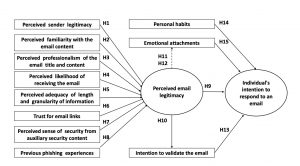Interactions Magazine May/June 2010 issue
“The process of design is spreading into new areas of society and business, and as it does, our work gets more complicated and more rewarding. From the details of our interfaces to the focus of our efforts, this issue describes the complexity of the changing landscape of interactions.”
Here are the articles available for free online:
interactions: Business, Culture, and Society
Jon Kolko
The process of design is spreading into new areas of society and business, and as it does, our work gets more complicated and more rewarding. From the details of our interfaces to the focus of our efforts, this issue describes the complexity of the changing landscape of interactions.
Reframing health to embrace design of our own wellbeing
Rajiv Mehta, Shelley Evenson, Paul Pangaro, Hugh Dubberly
This article describes a growing trend: framing health in terms of well-being and broadening health-care to include self-management. Self-management reframes patients as designers, an example of a shift also occurring in design practice – reframing users as designers. The article concludes with thoughts on what these changes may mean when designing for health.
Depth over breadth: designing for impact locally, and for the long haul
Emily Pilloton
In the past few years, we designers have acknowledged the imperatives of sustainability and design for the greater good, and responded by launching initiatives that are often rife with widespread cheerleading rather than deep, meaningful work. [Yet] I firmly believe that lasting impact requires all three of the following: proximity (simply being there, in the place you seek to design with and for), empathic investment (a personal and emotional stake in collective prosperity), and pervasiveness (the opposite of scattershot – involvement that has impact at multiple scales).
Solving the world’s problems through design
Nadav Savio
Design Revolution is a fantastic sourcebook of inspiring designs and creative problem solving and a deeply humanistic call to arms. Pilloton wants nothing less than for designers to focus their energy, knowledge, and talent on making people’s lives better.
Natural user interfaces are not natural
Don Norman
Gestural systems are no different from any other form of interaction. They need to follow the basic rules of interaction design, which means well-defined modes of expression, a clear conceptual model of the way they interact with the system, their consequences, and means of navigating unintended consequences. As a result, means of providing feedback, explicit hints as to possible actions, and guides for how they are to be conducted are required.
Making face: practices and interpretations of avatars in everyday media
Liz Danzico
We’re starting to see more and more experiences that weave avatar with message, pairing the expression of intent with content. How will the mix of image and message further proliferate through everyday life? Will the image stand for the message or will face work still be work? What will be socially acceptable, and will new etiquettes emerge in segments that cross personal, professional, and mixed boundaries?
The ubiquitous and increasingly significant status message
Bernard J. Jansen, Abdur Chowdury, Geoff Cook
The status message has evolved from its lowly beginnings into a multidimensional feature and service addressing numerous social needs.
Back to the future: bleeding-edge IVR
Ahmed Bouzid, Weiye Ma
The glaring disconnect between what companies aim to achieve in deploying interactive voice response (IVR) systems (better customer service) and what they actually do achieve (customer frustration) can be squarely laid on the shoulders of shabby voice user interface (VUI) design and implementation. The vast majority of today’s IVRs are, simply put, shamefully unusable, and customers detest them.
Intentional communication: expanding our definition of user experience design
Kristina Halvorson
Design and content. Content and design. It’s impossible (and stupid) to argue over which one is more important than the other – which should come first, which is more difficult or “strategic.†They need each other to provide context, meaning, information, and instruction in any user experience (UX).
Content strategy for everybody (even you)
Karen McGrane
When done the wrong way, creating new content and managing the approval process takes longer and is more painful than anyone expects. But planning for useful, usable content is possible – and necessary. It’s time to do it right.
interactions cafe: on language and potential
Jon Kolko
The more we carefully select our words, the more comfortable we’ll be in making the wholesale shift toward the emerging role of design in healthcare – and in other arenas where social responsibility is growing, and designers are able to value the whole person.




